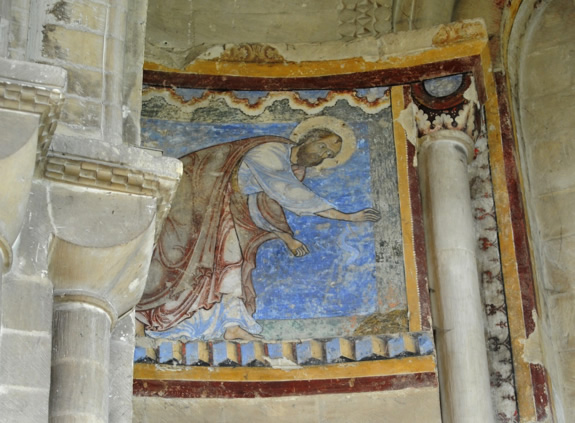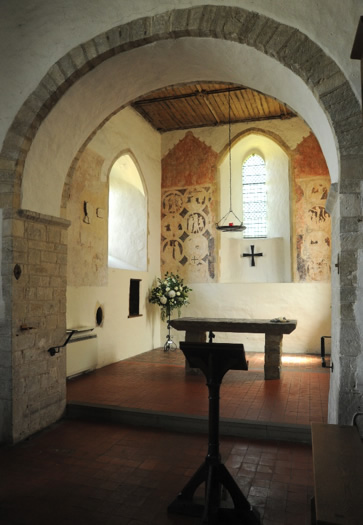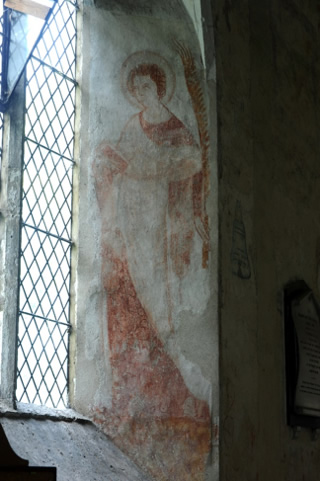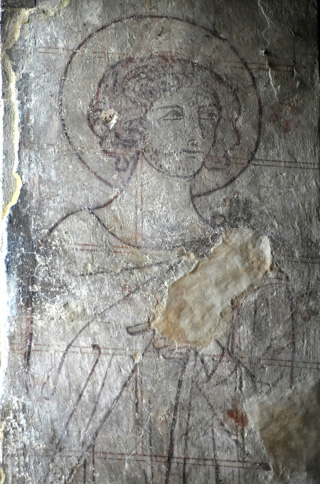After Cameron Newham was unable to lecture because of a road accident, Roger Rosewell stepped in at short notice to speak about medieval wall paintings, a subject on which he is one of the country’s leading experts. About 45 members listened to a fine exposition of the subject.
Roger explained that the purpose of wall paintings was not that they were ‘books for the illiterate’, which is the usual assumption but that in reality the reasons were more complicated: to emphasise the dedication of the church; to aid private devotion; for decoration; and more.
A wide range of religious subjects were illustrated, including death and the Last Judgment; the Seven Works of Mercy and the Seven Deadly Sins: saints and martyrs, especially the Virgin Mary and St Christopher; and many others.

Canterbury Cathedral: St Paul and the viper
The process of creating wall paintings involved, first, preparing the surface and, second, choosing and procuring different colours, some of which were cheap and easy to obtain and some very expensive. The painting technique is often wrongly called ‘fresco’ but this rarely was so in England as our climate is too damp for painting on wet plaster. It was dry plaster (‘Secco’ not ‘Fresco’) that was almost always used here.

Brook: the chancel with 12th century paintings

Newington: 14th century apostle

Selling: 14th century saint
Roger also talked about why wall paintings were so often damaged. Frequently, early medieval schemes of painting were affected by the later insertion to get more light of Decorated or Perpendicular windows. And a great deal was deliberately mutilated or painted over at the. Reformation.
Most of the illustrations Roger used were of Kentish churches. Some examples of the fine wall paintings in Kent’s churches are shown here. A particularly striking example which Roger discussed is that of St Paul and the Viper in St Anselm’s chapel at Canterbury Cathedral, which is still in outstanding condition with glowing colours, especially ultramarine made from lapis lazuli.

